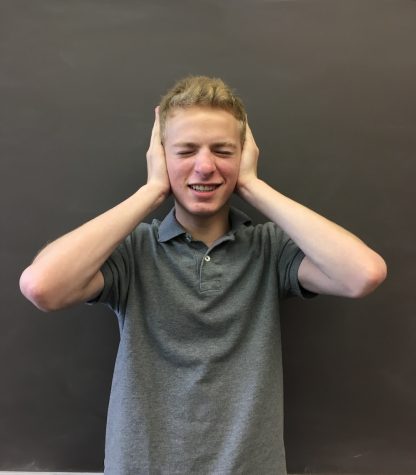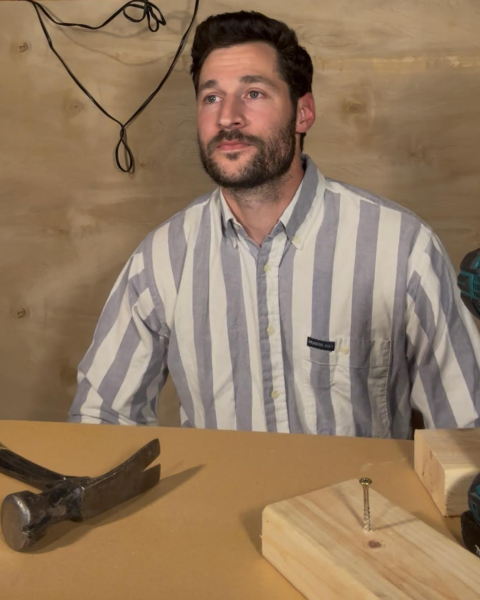Faculty Field Trip
History Department Visits New African American Museum in Nation’s Capital
In Washington D.C., a city filled with neoclassical buildings of white marble with greek columns like the White House, the Washington Monument, and the Lincoln Memorial, one brown trapezoidal building made of copper made to appear like a fortress stands a little differently: the city’s new National Museum of African American History and Culture.
From March 15 through March 17 the Parker history department visited the museum, located on 1400 Constitution Ave next to the Washington Monument and National Museum of American History since its opening in September 24, 2016. Six of the eight teachers flew to D.C. the night of March 15, visited the museum from 10 a.m. to 5 p.m. (when the remaining patrons were kicked out at the museum’s closing) on March 16, and flew back to Chicago on March 17.
The unique architecture was designed by David Adjaye and Philip Freelon to stand out and to reflect how the museum tells the story of a part of history that is not often told and does not receive enough attention: the African American story.
Upper school history and social studies teacher Jeanne Barr said, “It was a stunning, stunning museum.”
The primary purpose of the trip was to come together as a department, according to seventh grade history and social studies teacher and department co-chair Anthony Shaker. “What we wanted was to get to know each other not just as teachers but also as people, to be able to go through a museum together, travel together, stay in the same hotel, eat our meals together, and even just walking through D.C. was how we got to know each other as people,” Shaker said. “But we also got to know each other as history students in a way since we shared what we knew as we even just walked around a particular monument.”
The museum’s first section, a chronological story, begins on the lowest level, which patrons can reach by descending in an elevator “back through time,” according to Barr. This lowest floor begins with the history of medieval Africa and focuses on the trade of gold, salt, and ivory with the rest of the world that made its kingdoms so rich before the Portuguese traders, who were attracted by the immense wealth, began to trade in humans, thus beginning the slave trade. As patrons ascend the museum, they experience 500 years of African American history through the Civil War, the Jim Crow era, and the current Black Lives Matter movement.
This chronological section featured exhibits of well-known leaders like Harriet Tubman and Fredrick Douglas but also exhibits of unnamed persons. “There are all these spots focused on unnamed people because so much of the African American story, we don’t know their names,” Barr said. “They were stolen and renamed.”
Shaker had a similar reaction to the museum’s focus on individual stories. He said, “They did a good job of highlighting not just the story of a group of people but also telling the stories of specific people which I found so powerful.”
One such exhibit included several recreations of slave auctions. Engraved on the wall were names and descriptions of physical traits along with prices, and next to the wall were artifacts of shackles and clothing. “It was retching, and as a mom it was a drop in the bucket,” Barr said. “These are only the written, historical records, and there are so few of them. In between the lines are thousands, even millions of people, and that was so moving to me.”
The museum’s second section on higher floors focuses on African American culture instead of history. Unlike the chronological organization of the previous section, exhibits there are organized by cultural topics like arts, sports, and food.
These exhibits are updated and rotate over time. They feature exhibits on stories like African American influence in basketball and current newscasters, as well as profiles of individuals like Barack Obama and Ben Carson.
While the history department’s trip may have taken place in March, the planning for it began much earlier. After getting permission for the trip from Assistant Principal Ruth Jurgensen before December break, Upper School History and Social Studies Teacher and Department Co-Chair Andrew Bigelow waited in his room by the phone on hold with the museum for over three hours before a representative picked up, and he could reserve tickets.
Shaker spoke about the trip’s effect on how he will teach future classes. “I want to incorporate into my class how slavery was connected to the story of trade in history,” Shaker said. “People were being captured and sold during the era of history that I am focusing on in my class–and also how the selling of people was profited on by certain countries, the economic and personal impact of slavery. It was part of the global economy.”
For Barr, the museum added a new level of depth to the African American story that wasn’t present in the textbooks she uses. “They were telling individual stories whereas the books that we’re reading in class are talking about huge groups of people, nameless and faceless, and this museum put names and faces together,” Barr said. “You really got the sense that these were real humans, and sometimes in the absence of names, you can’t really realize their pain.”
The museum allowed Shaker to feel like a student again. “It is always a nice reminder to be moved by a story and by history, about the kinds of moments that we want to provide for students where you’re so moved to excitement, or anger, or passion,” Shaker said. “We all walked away loving history even more than we did before, and we are excited to share that with our students and our classes.”







